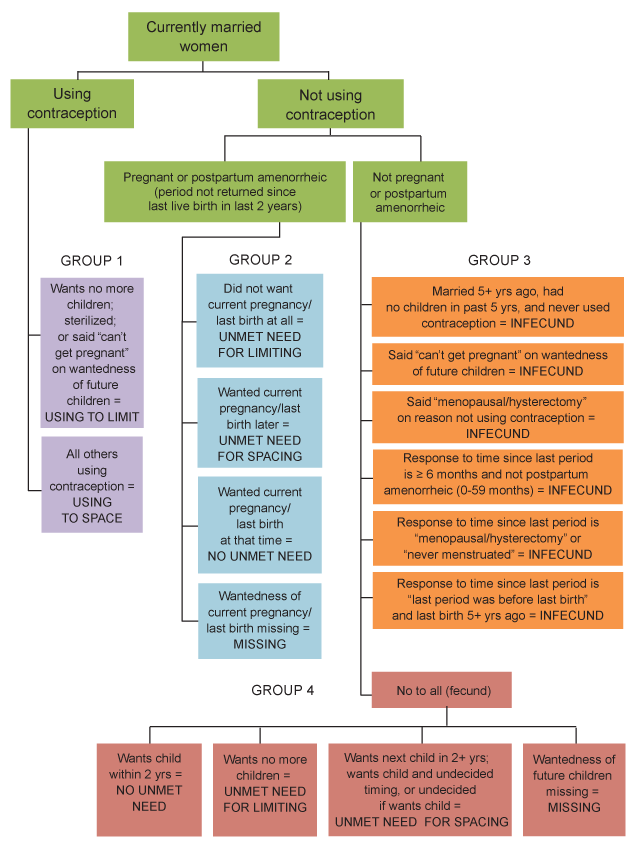Access to family planning (cont.)
Unmet need for family planning
Unmet need is defined as non-use of contraception among women who reported desire to avoid or postpone pregnancy. The concept is straightforward, but measuring unmet need is complex, because some proportions of women are not at risk of pregnancy due to infecundity, pregnancy, practice of lactational amenorrhea or sexual inactivity. Figure 24 presents how women at risk are identified and unmet need is measured. As the MDG indicator focuses only on married women the focus is the same here.
Figure 24: Definition of Unmet Need for Family Planning (currently married women)

Currently married women are classified into 4 groups:
- Group 1: Women using family planning.
- Group 2: Pregnant and postpartum amenorrheic women
- Group 3: Women who are considered as infecund
- Group 4: Fecund women who are neither pregnant nor in postpartum amenorrhea for 2 years and not using any type of contraception.
The detailed process of identifying each group can be found Bradley et al. (2012).
Unmet need for family planning is measured among fecund women who are not using contraception by using prospective fertility intention whether they want a (nother) child, and if yes, whether they want to wait for less than 2 years or 2 or more years. In addition to Group 4, Group 2 contribute to the calculation in unmet need for family planning among. Their need is identified by retrospectively-reported intention for the last birth.
Unmet need for family planning among current married women =
| Number of married fecund women aged 15-19 who want to stop or delay childbearing for 2+ years and are using any contraception |
| Number of currently married women aged 15-19 who want to stop or delay childbearing for 2+ years |
Limitations
Although comparability of this measure across time and countries is far important, there are some limitations.
The MDG indicator (unmet need for (any) contraception among married women) takes no account of unmarried women and differences in effectiveness of contraception. Unmet need among men can be obtained from the survey data, but is often omitted.
As fertility preferences change over time, this indicator needs to be complemented by contraceptive prevalence which bears more directly on fertility and population growth.